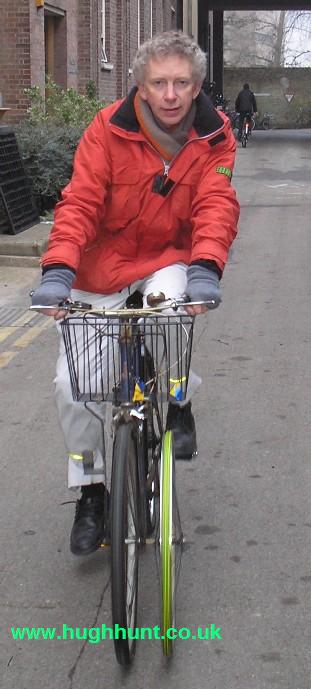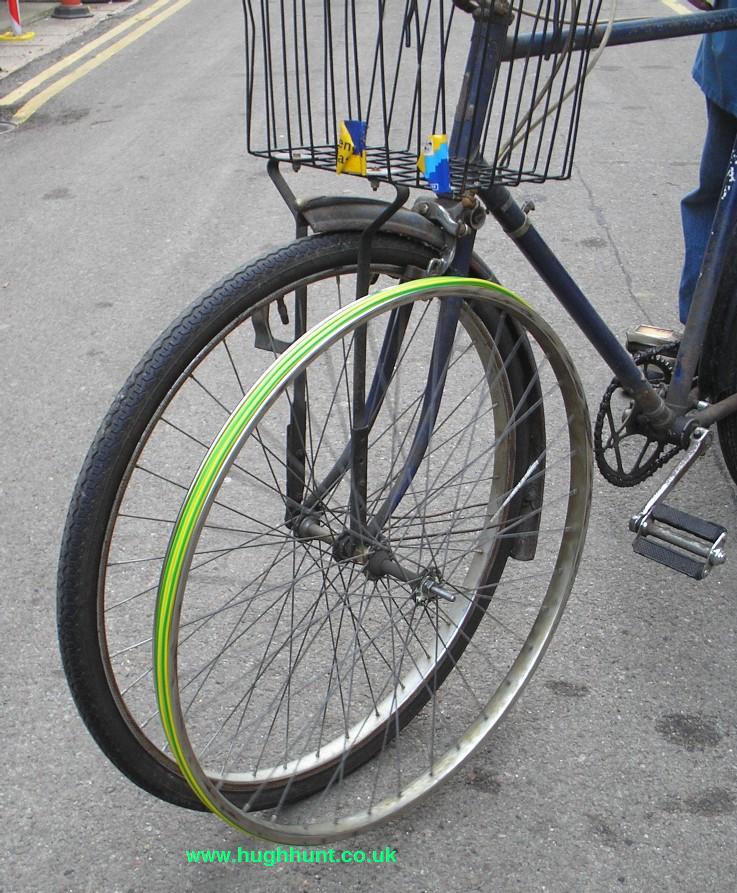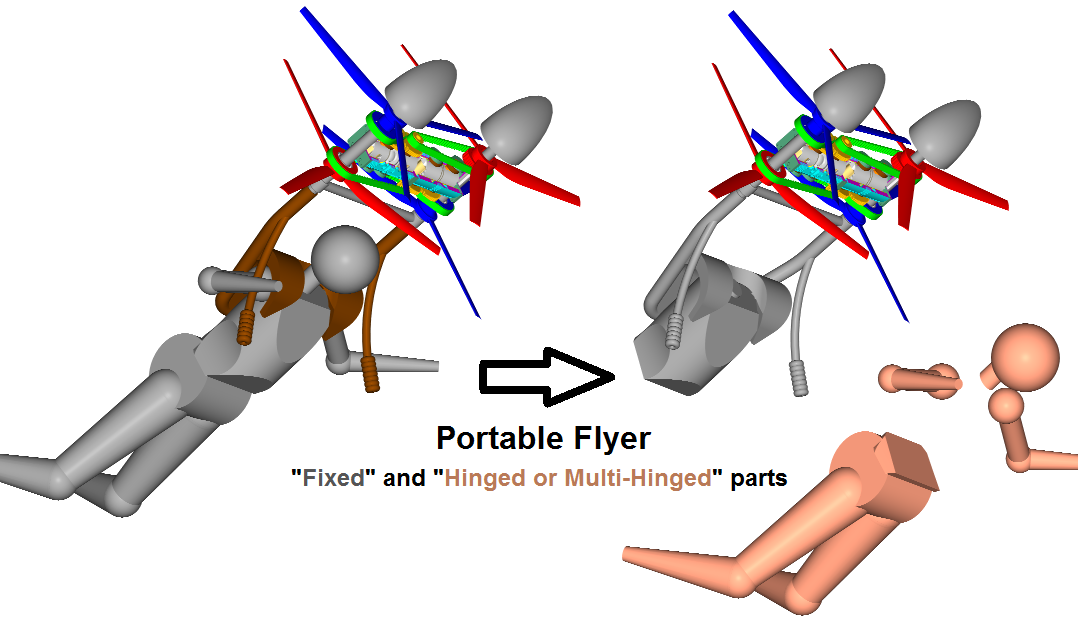Hello NathanE.
You write:
- “Just on the biking thing, you told us a few threads back how there was no gyroscopic inertial effect in the flyer. This is one of the significant contributions to bike stability making a bike possible to ride and control. “
No. This is a misconception
Quote from
http://www2.eng.cam.ac.uk/~hemh1/gyrobike.htm (
University of Cambridge, Department of Engineering)
Bicyles are not held up by the gyroscopic effect
How do we manage to stay up on a bike?
Gyroscopic forces are not important for the stability of a bicycle - as you can see if you read on below - but they help us to control the bike when riding with no hands.
More important than anything is "the trail".
The front wheel makes contact with the pavement at a point that lies behind the point where the steering axis intersects with the pavement - and the distance between these is called the trail.
The trail is not zero because the steering axis is tilted and the front fork is bent.
The trail works to stabilize a bike in much the same way as castors work on a tea trolley.
When you lean to the right, say, on your bicycle force at the contact point on the pavement will push the front wheel to the right.
This helps you to steer effortlessly and it allows for hands-free steering through leaning slightly left or right.
The gyroscopic effect helps but the trail is the more important factor.

Here I am pictured riding an ordinary bike, but with an extra wheel attached to the front axle.
The tyre has been removed to give a little clearance from the road and some copper cable (earthing cable with green insulation) wound around the rim in its place to replace the moment of inertia due to the tyre.
The "extra" wheel can be spun up by hand, before you start riding, at any speed you like, even several times the speed of spinning of the "actual" wheel. It can be spun either forwards or backwards and what is so clear is that it really makes no difference to the "ride" of the bike. The bike is just as easy to ride whether the extra wheel is spinning or not, forwards or backwards, fast or slow.
So this makes us wonder: "How do we stay up on a bicycle"?
The way we stay upright on a moving bike is by active control through steering. This is why we have to learn to ride a bike. If, as learners, we find ourselves falling over to the left then we learn to steer the bike to the left, which generates forces that tilt us back upright again, thereby putting the wheels back under our centre of gravity. Beginners are very wobbly, but as we become expert the corrections become smaller and we can ride in a straight line.
The faster we ride, the smaller the steering adjustment needs to be, simply because the bike moves much further in a given time. When riding very slowly the steering adjustments required are very large. When completely at rest, active steering can do nothing for us.
A good analogy is to ask,
"Why is it easier to hop (or pogo-stick) along a straight path than it is to stand still on the ball of one foot?" The reason is that we use each hop to generate correcting forces and also to put our foot down in a new place that is closer to where we need it to be in order to maintain our balance.
It is worth adding here that some bikes are easier to ride than others, and this is all to do with the "trail" described above, and many other parameters such as the hight and width of the handlebars, the height of the seat and the mass of the rider.

Also note that a bike with no rider can stay up much more easily - as many of the bloggers responding to this article have said. This is because the bike is now much lighter and the centre of gravity is much lower. So the forces acting to cause the bike to fall over are smaller. This means now that both "trail" and gyro effects are much more significant in the overall dynamics of the bike and it stays up more easily.
. . .
Misconception 3:
The gyroscopic effect holds a bike up so you can ride a bike with the handlebars locked.
NO!
Try it.
You fall over immediately.
The easiest way to do this is with a rope.
Tie your handlebars to the cross bar and then tournequet the rope really tight. You will have trouble even getting started. Get someone to push you along, or ride down a hill.
Be prepared to fall!
End of quote
Thanks
Manolis Pattakos

 .
.


